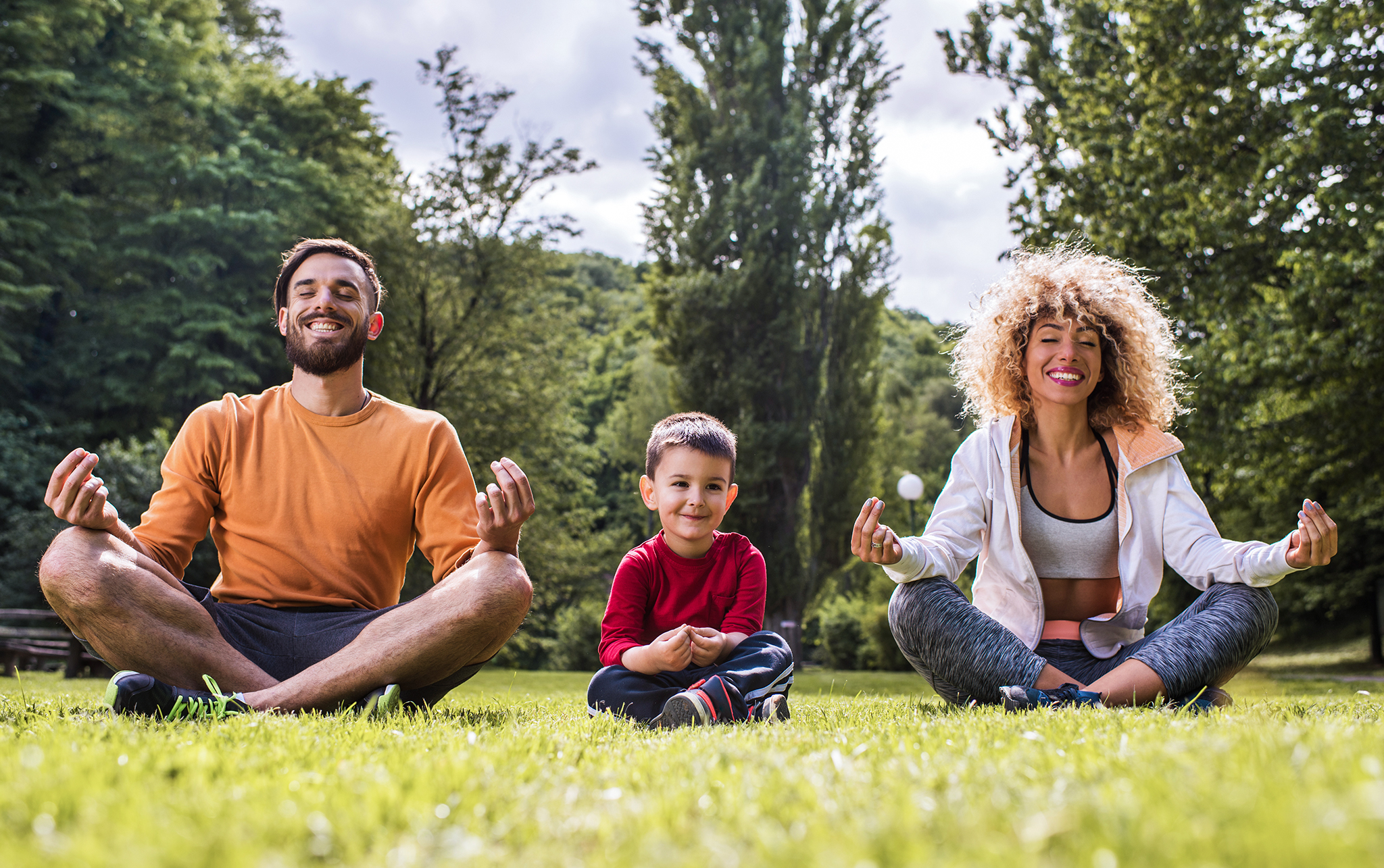Meditation is usually seen as the perfect way for you to have that precious peaceful time with yourself. In the context of such predisposition, the thought of family meditation might not make much sense.
However, if you dig deeper into the meaning of this ancient tradition, you realize that it doesn't have to be solitary. On the contrary, many masters would advocate against “practicing in the vacuum.” It's easy to stay calm and focused while you sit on your special cushion in your sound-proofed room or savor the majestic views from the top of the mountain.
Dealing with distractions coming from the presence of others is only one of many perks of meditating in the circle of your family. This will undoubtedly help you grow as an individual. Although a better question is: what's in it for all of you?
Couples meditation
Meditating together with someone is easily one of the most intimate things you two will ever experience. Sitting there together focusing on your breath, the sound of relaxing music, or gazing into a candle flame grounds you and your partner at the same place and at the same time, physically and mentally.
Practicing with your partner is a unique way to strengthen your bond. It enriches the pool of your shared values. It gives you a chance to spend quality time together. The support you give to each other motivates you to keep practicing on a daily basis.
It makes all the world around you disappear for a moment, brushing off all the mental clutter that often poisons any relationship. It gives you the opportunity to listen to the love you share. Scheduling the same time for your concentration can grant you a special sense of connection even if you're miles apart.
Picturing two adults sitting down at home for a daily quiet time together reminds of a romantic postcard illustration. It at least sounds like an effective substitute for formal couple's therapy. But is there really a need to struggle with convincing your kids to join in?
Family meditation
If I asked you to tell me what the thought of a family tradition (not necessarily yours) brings to your mind, what would you say? Chances are you'd first think of holiday celebrations, such as Christmas dinners, or seasonal activities, such as winter skiing, and family vacations.
One problem with these family traditions is that they are occasional and, more often than not, stress-inducing. They happen to be too overwhelming, even if predictable. Another issue is that these traditions is something that our society pressures us to participate in, not necessarily something we came up with ourselves.
Nevertheless, strong traditions are necessary for social bonding. But I must argue that daily home rituals are much more crucial.
Family circle meditation is definitely something you want to invite your kids to join in. All the personal benefits aside, it gives you and your little ones a strong sense of closeness, mutual appreciation, and unconditional love.
Months and eventually years of this daily ritual will help your children grow into confident, sensitive, and bright adults. They'll have the skills to stay calm, to be attentive to others, to recognize their mental struggles and deal with them maturely.
Tips for meditating with children
In order to make a meditation with the whole family successful, you have to adjust your practice according to your children's age. That will affect their motivation, the duration, and the nature of your quiet time.
For preschoolers, it can be possible to stay still only for up to 10 seconds. That doesn't seem a lot, but it is enough to help them recognize the benefits of stopping for a moment to take a long revitalizing breath. This can be practiced several times a day, especially when negative emotions start to take over.
Most importantly, make it a true ritual. If done regularly, it soon becomes something you simply cannot live without.
A five-year-old may already be able to stay quiet and focused for up to 5 minutes. For those who are already attending primary school, the attention span can be stretched to 5-15 minutes. It can vary from individual to individual. It's a good idea to record your kid's first reactions and behavior patterns and how they change with each minute.
One thing you don't want to do when convincing your kids to join in is to make it look like you're pressuring them to take on another chore. The younger the children are, the more playful your approach should be. Bringing their favorite toy may be helpful for little ones. It can be used as a focal point for their attention.
Improvise with their resting position. Some children will be okay with sitting. They might even be excited to experiment with a traditional lotus position. However, others may only be able to fully relax while lying on their backs.
You should also know that children respond better to guided meditations. It can be your own voice or a professional recording aimed at kids. You may teach your kids to focus on their breath, but if that doesn't work well, you can change it to other things. You can use a candle flame for visual focus and/or the sound of a chime or a resonant bell for auditory focus.
Most importantly, make it a true ritual. It's best if you do it daily, wherever you are, because it promotes responsibility in all of the members of your family. If done regularly, it soon becomes something you simply cannot live without.
Also, set up a predictable routine leading to the practice, such as doing it after breakfast. It triggers the brain to calm down and prepare for a wonderful time together in the peace and quiet.






